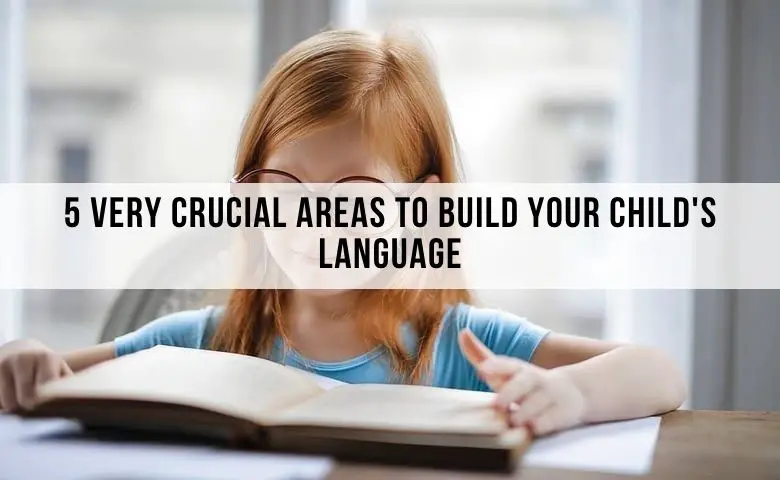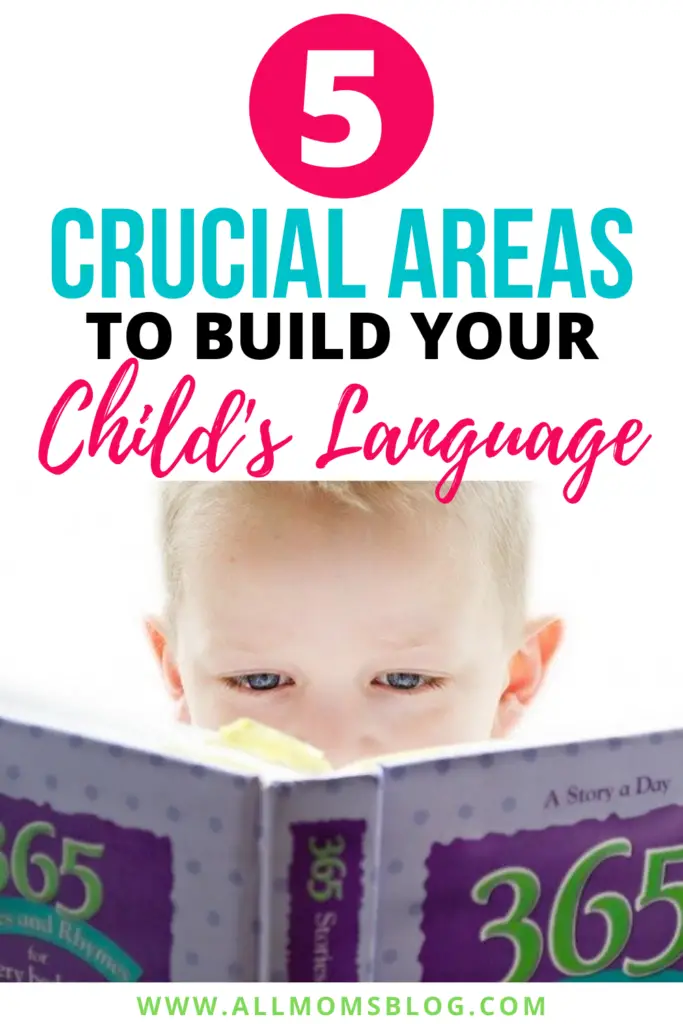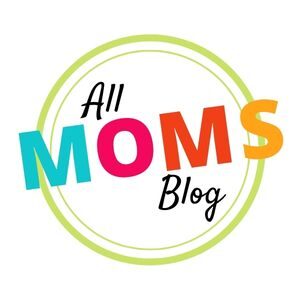5 Crucial Areas to Build Your Child’s Language
How can you develop your child’s language? Learn the crucial areas you need to focus on when growing your child’s vocabulary.
Building your child’s language is a critical part of your child’s overall development.

If you want your child to have a rich and fulfilling life, the best thing you can do is to help build your child’s language skills.
Building your child’s language isn’t something you should wait to do when they are old enough to go to school.
Language development is extremely rapid. Between birth and second grade, according to an average, children learn about 5200 root words.
Language building supports your child’s ability to express, communicate and understand feelings. It also supports skills like problem-solving, developing and maintaining relationships.
So, learning to understand and enjoy language is a crucial first step in literacy and forms the basis for learning to read and write. It is important to build his vocabulary as it is a strong indicator of a child’s knowledge of the world.
Now, what are the areas to build your child’s language?
Here are 5 crucial areas, that I believe parents and educators, need to understand to build a child’s language and vocabulary skills.
Expressive Language (Using Language)

‘Expressive language’ is your child’s ability to use language to express what they want and need.
This includes all the words that they know (their vocabulary) but also how they string those words together to make sentences.
They need to use the right tenses and word endings so they say exactly what they mean to say (for example, ‘I walked’ is very different from ‘I walk’).
How Can You Build Your Child’s Expressive Language?
Give Your Child The Words They Can Use
If your child is pointing at a cupboard you might say, ‘oh you’re hungry!’ Emphasize the word you are teaching them slightly.
Even if you know what they want through their gestures, saying the word for them is still an important step to develop their language.
When they hear the words they can use in the right context over and over, eventually, they will be able to say it for themselves.
Provide Your Child With Choices
‘Do you want an apple or a banana?’ By giving choices in this way, you are modeling vocabulary for your child.
You have already given them the answer to your question so it is much more likely that they will try out saying this word for themselves.
For a child with emerging language skills, this is much less pressure than an open question such as, ‘what do you want?’
Don’t Correct Mistakes
Your child will learn language bit by bit; they will make lots of mistakes while they figure it all out. When you hear your child make an error, model the correct version naturally without correcting your child.
This is the most effective way to improve your child’s language as it is positive and natural. For example, if your child says, ‘look- two dog!’ You could reply, ‘wow! Yes, two dogs! I can see the two dogs! Two big dogs!’
Stress the correct version a little and repeat it a few times. You are modeling the correct version, while still acknowledging what your child has said.
Receptive Language (Understanding Language)

Receptive language is all about understanding the language that others use. Your child needs a strong foundation of receptive language before they will be able to use this language for themselves.
Think of learning a foreign language- you need to be able to understand a word really well before you will be able to use it in a conversation.
What Can You Do To Build A Receptive Language?
Naming Objects In The Environment
Label things in the world around you and feed in language at every opportunity. When a child first hears the word ‘dog’ they will probably only relate this to their own dog. Then they might think that this word means all furry creatures with four legs.
However, as they hear this word repeated over and over in lots of different contexts, they will gain a deep understanding of the word ‘dog’ and be able to apply it correctly in all sorts of different ways.
Play ‘Listening’ Games
These games might be games such as ‘Simon Says’ or it might be simply setting up an obstacle course in the garden and asking your child to listen to the instructions.
It could be something like ‘hop on one leg until you get to the ball, kick the ball into the net, and then run around the net twice’. You will need to modify this to a level that your child can follow.
Gradually build up their ability to listen to and follow directions.
Read With Your Child
Read and chat about what you’re reading! Modeling language in everyday life is crucial to building your child’s receptive language, but reading widens the context.
Books provide a platform to expose your child to new and exciting vocabulary that they don’t encounter in everyday life (e.g. jungle animals). It’s also good practice to discuss the story after.
Talk about the story-line and see what they can remember (in a fun and positive way!)
Narrative Language

This point leads on to the next crucial area of language to build with your child- narrative language! The narrative is more than just the books that we read.
We all use narratives every single day- this important skill enables us to relate our experiences to others. Strong narrative skills are important for play and friendships.
What Can You Do To Build A Narrative Language?
Reading Lots Of Stories
Reading stories and practicing re-telling them can help build narrative language. Use a framework to help your child to organize their thoughts. You could use questions such as,
Who were the characters in the story?
What happened first in the story?
Do you remember what happened next?
What was the problem in the story?
How did the story end?
Practice making up stories about things you see around you. Act your stories out, draw pictures and generally make it as fun as you can.
Narrative language is a necessary foundation for your child learning to read and write and is something you can build long before they go to school.
RELATED: 9 Incredible Habits For Raising Smart Kids
Social and Emotional Language

Social and emotional language is slightly different things but go hand in hand. With strong social and emotional language, your child will know how to process their experiences and their feelings, build empathy and understand others, and know-how to relate to others socially.
This area of language is so crucial to building with your child as it gives them a way to process and understand complex emotions. Being able to name an emotion is one big step in knowing how to manage it. You are equipping them with important skills for later in life!
What Can You Do To Build Social And Emotional Language?
Developing your child’s play skills
Teach skills such as sharing, negotiating and problem-solving. This is a tricky area for parents but luckily there are some awesome ideas to help you!
Be very intentional with the language you use as you teach these skills- model language that your child can use as an ‘internal script.’
For example, you might say, ‘it’s important to share and take turns so you can both enjoy the toy. It’s your brother’s turn now, and then it will be your turn. While you’re waiting for your turn you could…’
Build Emotional Literacy
Build your child’s emotional literacy by naming and modeling emotions. When they are upset you could say, ‘you look frustrated. You could…’
Give them some practical ideas of what to do. It’s also a great idea to model your own emotions and demonstrate your own problem-solving skills.
You could say, ‘wow I’m really upset that I dropped my cup. I need to take some big breaths to help myself to calm down. Then I can clean it up and get another drink. It’s OK because I know that mistakes happen.’
So that’s it!
These are 5 Crucial areas to build your child’s language. You can also check out my other parenting posts here.
Final Thoughts on Crucial Areas to build your child’s language
The most important thing to remember is to live life out loud! Use lots of language in everyday life. Comment on what’s happening around, label different kinds of words and model your thoughts out loud.
Give your child the words they can say. As they grow you can build stories together, play word games and generally have fun with language! Try to make it as natural as you can with no pressure.
Remember that language is our way to interact with the world and with each other. Enjoy this amazing gift!
I hope this post has helped you! What are other strategies you use to build your child’s language skills? Let me know in the comments.
Related Articles:
7 Best Brain Boosting Foods For Kids
9 Incredible Habits For Raising Smart Kids
The 26 Best Books For Preschoolers
Potty Training Tips For First Time Parents
Don’t Forget To Pin It For Later!


Hi being a SLP my self , while reading this I was thinking only an SLP can explain apne discuss the topic so well . And to my surprise an SLP wrote it.
Well done!!
Also sharing to my groups
Great post. I love the practical advice in this article. Thank you for sharing.
Hi, Christina! Thank you so much. I’m glad you found the post helpful.